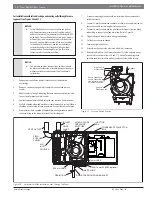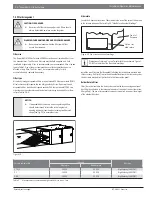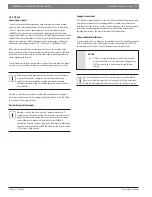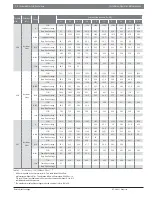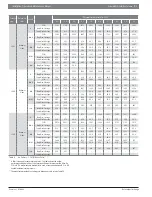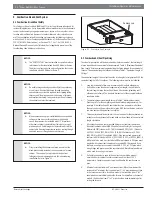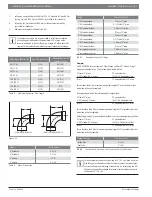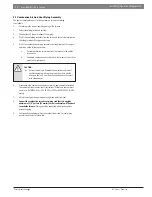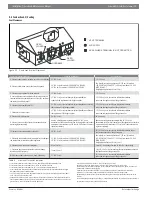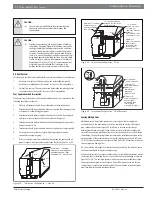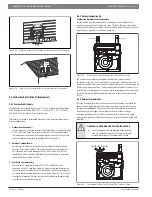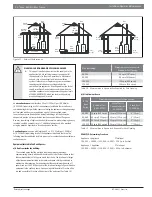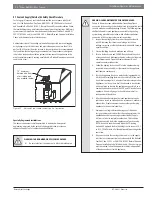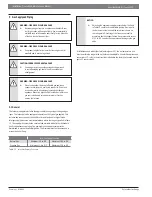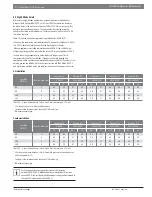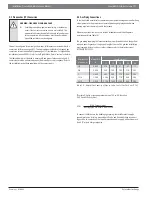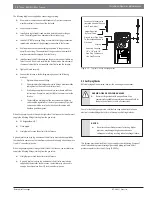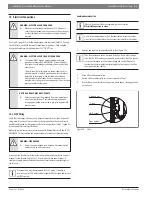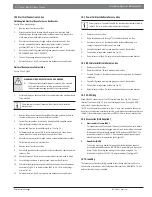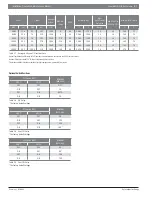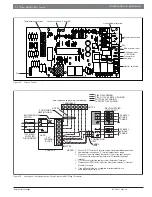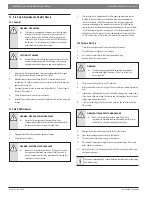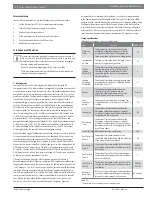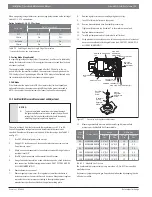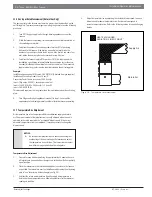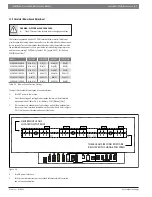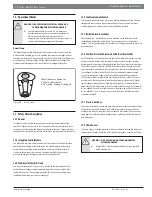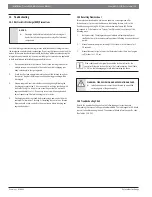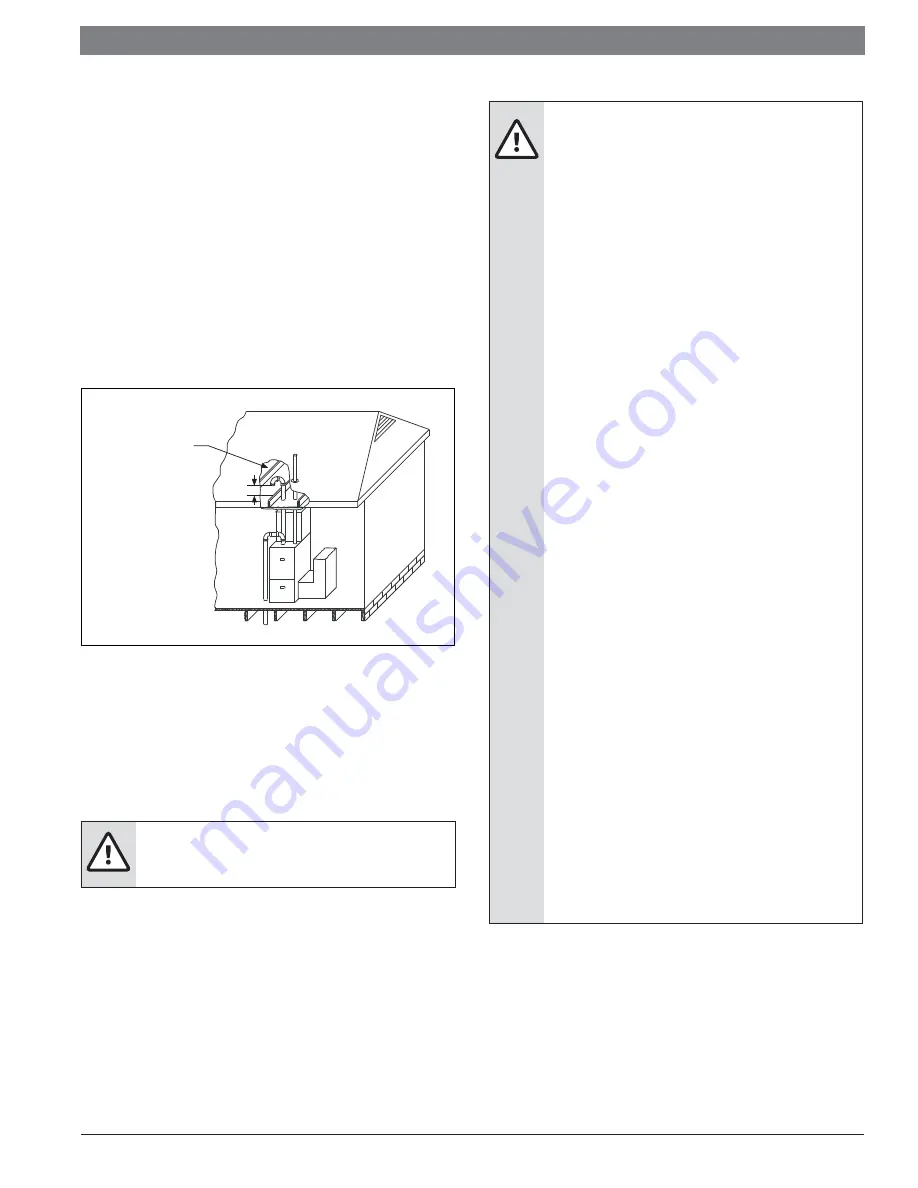
3 4 |
E
coer
96%
A
F
UE
Gas Furnace
Installation, Operation & Maintenance
07-2021
|
E
coer
I
nc
.
Data subject to change
8.7 Vent and Supply (Outside) Air Safety Check Procedure
For Category IV furnaces, vent installations shall be in accordance with Parts 7
and 11 of the National Fuel Gas Code, ANSI Z223.1/NFPA 54 and/or Section 7
and Appendix B of the CAS B 149.1, Natural Gas and Propane Installation Codes,
the local building codes, and furnace/vent manufacture’s instructions. Multi-story
systems must be installed in accordance with the National Fuel Gas Code, ANSI
Z223.1/NFPA 54 and / or the CSA B 149.1, Natural Gas and Propane Installation
Codes, and the manufacturer’s instructions.
Horizontal portions of the venting system shall be supported to prevent sagging
using hangers or perforated straps and must slope upwards no less than 1/4 in.
per foot (0.635 cm/m) from the furnace to the vent terminal. It is recommended
that you follow the venting safety procedure below. This procedure is designed
to detect an inadequate ventilation system that can cause the appliances in the
area to operate improperly causing unsafe levels of Carbon Monoxide or an unsafe
condition to occur.
Figure 32
12” Min.
12” minimum
between bottom
of air intake and
any material below.
Attic and Crawl Space Combustion Air Termination
Specially Engineered Installations
The above requirements shall be permitted to be waived where special
engineering, approved by the authority having jurisdiction, provides an
adequate supply of air for combustion and ventilation.
WARNING: CARBON MONOXIDE POISONING HAZARD
Be sure to instruct the owner not to block this intake pipe.
WARNING: CARBON MONOXIDE POISONING HAZARD
Failure to follow the steps outlined below for each appliance
connected to the venting system being placed into operation could
result in carbon monoxide poisoning or death. The following steps
shall be followed for each appliance connected to the venting
system being placed into operation, while all other appliances
connected to the venting system are not in operation:
1. Inspect the venting system for proper size and horizontal
pitch. Determine that there is no blockage, restriction,
leakage, corrosion or other de
fi
ciencies which could cause an
unsafe condition.
2. Close all building doors and windows and all doors.
3. Turn on clothes dryers and TURN ON any exhaust fans, such
as range hoods and bathroom exhausts, so they shall operate
at maximum speed. Open the
fi
replace damper. Do not
operate a summer exhaust fan.
4. Follow the lighting instructions. Place the appliance being
inspected in operation. Adjust thermostat so the appliance
shall operate continuously.
5. Test each appliance (such as a water heater) equipped with
a draft hood for spillage (down-draft or no draft) at the draft
hood relief opening after 5 minutes of main burner operation.
Appliances that do not have draft hoods need to be checked
at the vent pipe as close to the appliance as possible. Use a
combustion analyzer to check the CO2 and CO levels of each
appliance. Use a draft gauge to check for a downdraft or
inadequate draft condition.
6. After it has been determined that each appliance properly
vents when tested as outlined above, return doors, windows,
exhaust fans,
fi
replace dampers and any other gas burning
appliance to their normal condition.
7. If improper venting is observed during any of the above
tests, a problem exists with either the venting system or the
appliance does not have enough combustion air (Supply
Air from outside) to complete combustion. This condition
must be corrected before the appliance can function safely.
NOTE: An unsafe condition exists when the CO reading
exceeds 40 ppm and the draft reading is not in excess of -0.1
in. W.C.(-25 kPa) with all of the appliance(s) operating at the
same time.
8. Any corrections to the venting system and / or to the supply
(outside) air system must be in accordance with the National
Fuel Gas Code Z223.1 or CAN/CGA B149.1 Natural Gas and
Propane Installation Code (latest editions). If the vent system
must be resized, follow the appropriate tables in Appendix G
of the above codes or for this appliance.

